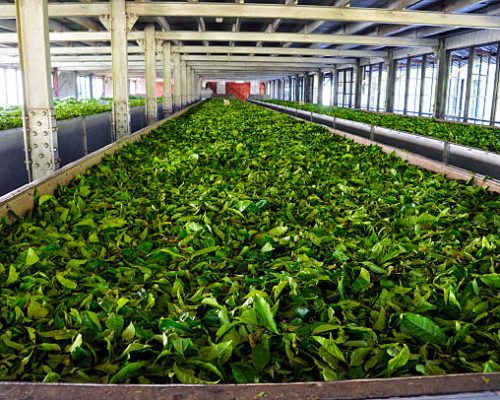Introduction
The Project Report For Tea Factory is as Follows.
A tea factory, also known as a tea processing plant or tea processing unit, is a facility that processes tea leaves to create various varieties of tea. It is an essential component of the tea business, which includes the planting, harvesting, and processing of tea leaves to produce the finished product that is consumed globally. Tea factories are often located in tea-growing regions, such as India, China, Sri Lanka, Kenya, and other tea-producing countries. These facilities serve as important centres for bringing freshly picked tea leaves for processing. These factories handle the complete tea manufacturing process, from withering to packaging.
The first phase in the tea factory is withering, which involves spreading newly picked tea leaves out on enormous trays or troughs. The leaves are allowed to wither, allowing them to lose moisture and become more flexible. This helps rolling and shaping the leaves simpler in the next phases. After withering, the tea leaves go through the rolling step. This includes mechanically or manually rolling the leaves to break down their cellular structure and release the important oils and enzymes. Rolling also aids in moulding the tea leaves into the desired shape, such as twisted or ball-like.
Depending on the type of tea produced, the tea leaves are oxidised or fermented after rolling. Black tea, for example, is completely oxidised, whereas green tea is just partially oxidised. To get the appropriate flavour, fragrance, and colour of the tea, the oxidation process is meticulously managed. The leaves are burned or dried after oxidation to stop the oxidation process and minimise moisture content. This procedure is critical for protecting the quality of the tea and preventing deterioration. Drying may be accomplished by a variety of ways, including hot air drying, pan burning, and baking.

Benefits Of Tea Factory
Black Tea Factory: Black tea factories specialise in the processing of tea leaves for the manufacturing of black tea. Black tea is fully oxidised, giving it a powerful flavour, black colour, and strong scent. These factories contain special equipment and facilities for withering, rolling, fermenting, and drying tea leaves in order to produce the ideal attributes of black tea.
Green Tea Factory: Green tea factories process tea leaves for the manufacturing of green tea. Green tea is oxidised as little as possible, keeping its inherent antioxidants and subtle flavours. These facilities use processes like steaming or pan-firing to stop oxidation and keep the tea’s green colour and grassy flavour.
Oolong Tea Factory: Oolong tea factories specialise in the production of slightly oxidised oolong tea. Oolong tea is processed using a unique procedure that includes withering, bruising, and controlled oxidation. The degree of oxidation can vary, resulting in a diverse range of oolong teas with various flavours and fragrances.
White Tea Factory: White tea factories process tea leaves for white tea manufacture. White tea is created from young tea buds and leaves that have been little processed, often withered and dried. This mild processing procedure retains the tea’s delicate flavours, light colour, and subtle scent.
Market Potential Of Tea Factory
The worldwide tea market was valued at $49 billion in 2021 and is expected to increase at a CAGR of 6.7% from 2022 to 2031, reaching $93.2 billion by 2031.
Health and wellness trends are expected to drive the tea market size. In recent years, there has been a surge in interest in health and wellbeing, which has resulted in tremendous expansion in the tea business. Tea is regarded as a healthy beverage option, and many people use it to improve their general health and well-being. Teas with particular health advantages, such as decreasing stress, improving digestion, boosting immunity, and assisting in weight reduction, are gaining popularity among consumers.
As a result, there has been an increase in functional teas made with specific components to address certain health issues. The type, packaging, application, distribution channel, and region subcategories that make up the tea market forecast are listed below. Green tea, black tea, oolong tea, dark tea, and other teas dominate the market. It is divided into plastic containers, loose tea, paperboard, aluminium tins, and tea bags.
